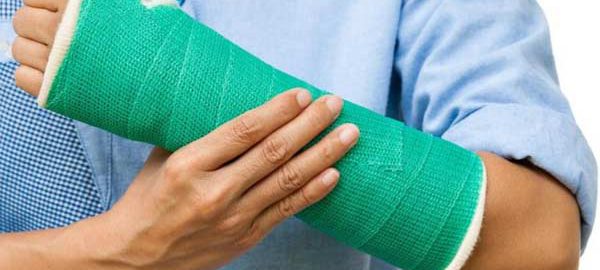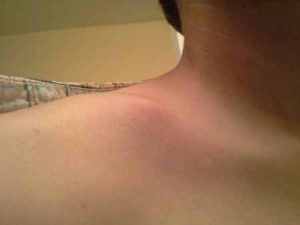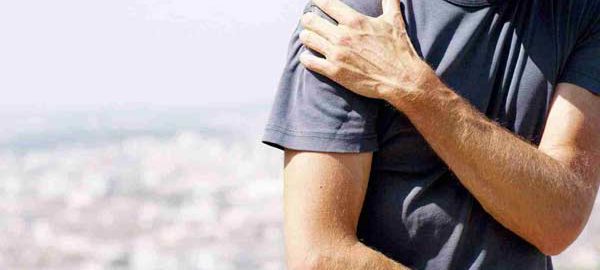Dr Ashu Consul is the best orthopaedic for bone fracture treatment in Dwarka, Delhi. A fracture is a crack or a break in a bone. Most fractures are a consequence of the force applied to a bone.
- Fractures are often caused by injury or overuse.
- The injured area hurts (especially when used), is usually swollen, and may be infected, distorted, angled, or out of position.
- Other injuries, such as blood vessel and nerve injuries, compartment syndrome, infections, and long-term joint problems may also be present or develop later.
- Sometimes orthopaedic in Dwarka can diagnose fractures based on symptoms, injury-causing circumstances, and clinical examination results, but x-rays are usually needed.
- Most fractures heal well and cause few problems, but the time it takes to heal varies, depending on many factors, such as the patient’s age, the type and severity of the injury, and the presence of other disorders.
- Trauma & fracture treatment in Dwarka, Delhi depends on the type and severity of the fractures and may include pain relievers, PRICE (protection, rest, ice-ice-, compression, and lifting), manoeuvres or procedures to put the damaged parts back into their normal position (reduction), immobilization of the injured part (for example, with a cast or splint), and sometimes surgery.
Bones are part of the musculoskeletal system, which also includes the muscles and tissues that connect them (ligaments, tendons, and other connective tissues, called soft tissues). These structures provide the body with its shape and stability and make it able to move.
Tissues of the musculoskeletal system can be damaged in a variety of ways in addition to fractures, including:
- Joint bones can be completely separated from each other (called dislocation) or only partially out of position (called subluxation).
- Ligaments (which bind bones together) can rupture (sprain).
- Muscles can break (fibrillary ruptures, strains, or muscle sprains).
- Tendons (which bind muscle to bone) can rupture.
Sprains, strains, and broken tendons are called soft tissue injuries.
Fractures (and other musculoskeletal injuries) vary greatly in both severity and the type of treatment required. For example, fractures can range from a small crack in a foot bone, which easily goes unnoticed, to a major life-threatening pelvic fracture.
A fracture can break the skin (called an open fracture) or not (closed fracture).
Trauma that breaks a bone can also seriously damage other tissues, including the skin, nerves, blood vessels, muscles, and various organs. These injuries can complicate the fracture treatment in Dwarka, Delhi, and/or cause problems temporarily or permanently.
In most cases, the limbs are fractured, but fractures can occur in the bones of any part of the body, such as:
- Head
- Face
- Eyes
- Ribs
- Spine
Causes
The most common cause of fractures is trauma. Trauma includes
- Direct trauma, such as in falls or traffic accidents
- Repeated moderate force, such as in long-distance runners or soldiers who march with a heavy load on their backs (these fractures are called overexertion fractures)
The severity of the fractures depends in part on the intensity of the trauma. For example, a fall from the height itself usually causes minor fractures, but a fall from a tall building can cause serious fractures affecting multiple bones.
Some fractures occur during sports.
Some disorders can weaken the bone. These factors include the following
- Certain infections
- Bone tumors (which may or may not be cancerous), including cancers that have spread (metastasis) from anywhere in the body to the bone
- Osteoporosis
People with one of these disorders are also more likely to break a bone, even when the force exerted is mild. These types of fractures are called pathological fractures.
Trauma & Fracture Management/Treatment in Dwarka, Delhi
- Treating serious complications
- Pain relief
- Protection, rest, ice, compression, and elevation
- Realignment (reduction) of out-of-place fragments
- Immobilization, usually with a splint or cast
- On certain occasions, surgery
Serious fractures and related serious injuries, if present, are treated immediately. For example, shock or compartment syndrome is treated right away. Without timely fracture treatment in Delhi, such injuries can worsen, becoming more painful, and being more likely to cause a loss of function. These injuries can cause serious problems or even death.
If a person thinks they have a fracture or other serious injury, they should go to an emergency room. If you are unable to walk or have multiple injuries, you must be transferred by ambulance. Until medical assistance can be obtained, the following should be done:
- Prevent the injured limb from moving (immobilize it) and provide support with a makeshift splint, sling or pillow
- Raise the limb, if possible above the height of the heart, to limit inflammation
- Apply ice (covered by a towel or cloth) to the injured area to control pain and inflammation
Fracture Treatment in Dwarka of children
Fractures in children are often treated differently from fractures in adults, as children’s bones are smaller, more flexible, less brittle, and still growing. Fractures in children heal better and faster than in adults. Several years later, in most children’s fractures, the bone appears almost normal on the x-ray.
In children, treatment with plaster is often preferable to surgery because
- Children develop less stiffness after wearing a cast than adults.
- They are more likely to be able to move normally after carrying a cast.
- Surgery near a joint can damage the part of the bone that allows children to grow (growth plate).
Treating serious injuries
In the emergency department, orthopaedic in Delhi determines the presence of injuries that require immediate treatment.
If a tear has occurred in the skin, the wound is cleaned, usually after using a local anaesthetic to numb the area, and covered with a sterile bandage. In addition, the injured person is given a vaccine to prevent tetanus and antibiotics to prevent infection.
To ensure that the injured part is not deprived of blood, damaged arteries are surgically repaired unless they are small and blood flow is unaffected.
The severed nerves are also surgically repaired, but this surgery may be delayed up to several days after the injury, if necessary. If the nerves are compressed or flooded, they can heal on their own.
Pain relief
Pain is treated as soon as possible, usually with opiate pain relievers and/or acetaminophen. In general, aspirin (acetylsalicylic acid) and other nonsteroidal anti-inflammatory drugs (NSAIDs) are not usually recommended in these cases because they are not usually more effective than acetaminophen, and in some people, they may worsen bleeding.
Sometimes orthopedic in Delhi injects an anaesthetic into the nerves in the area. This procedure (called a nerve block) prevents nerves from sending pain signals to the brain.


 Most heal without any intervention. The arm is immobilized in phase so that the movements of the shoulder during healing are reduced. An adult will wear the band for a few days up to a week; children may need 1 to 3-4 weeks. For children, a ribbon can also be used to keep the shoulder in the correct position.
Most heal without any intervention. The arm is immobilized in phase so that the movements of the shoulder during healing are reduced. An adult will wear the band for a few days up to a week; children may need 1 to 3-4 weeks. For children, a ribbon can also be used to keep the shoulder in the correct position.
 When the bone is not in precise alignment, the fracture is known as displaced. In proximal humerus fractures, severity is usually described by how many of the major parts of the proximal humerus fracture are displaced. There are 4 parts of the proximal humerus, therefore a displaced fracture can be 2 parts, 3 parts, or 4 parts (a nondisplaced fracture is, by meaning, part I). In general, the most displaced parts, the prognosis is lower.
When the bone is not in precise alignment, the fracture is known as displaced. In proximal humerus fractures, severity is usually described by how many of the major parts of the proximal humerus fracture are displaced. There are 4 parts of the proximal humerus, therefore a displaced fracture can be 2 parts, 3 parts, or 4 parts (a nondisplaced fracture is, by meaning, part I). In general, the most displaced parts, the prognosis is lower.